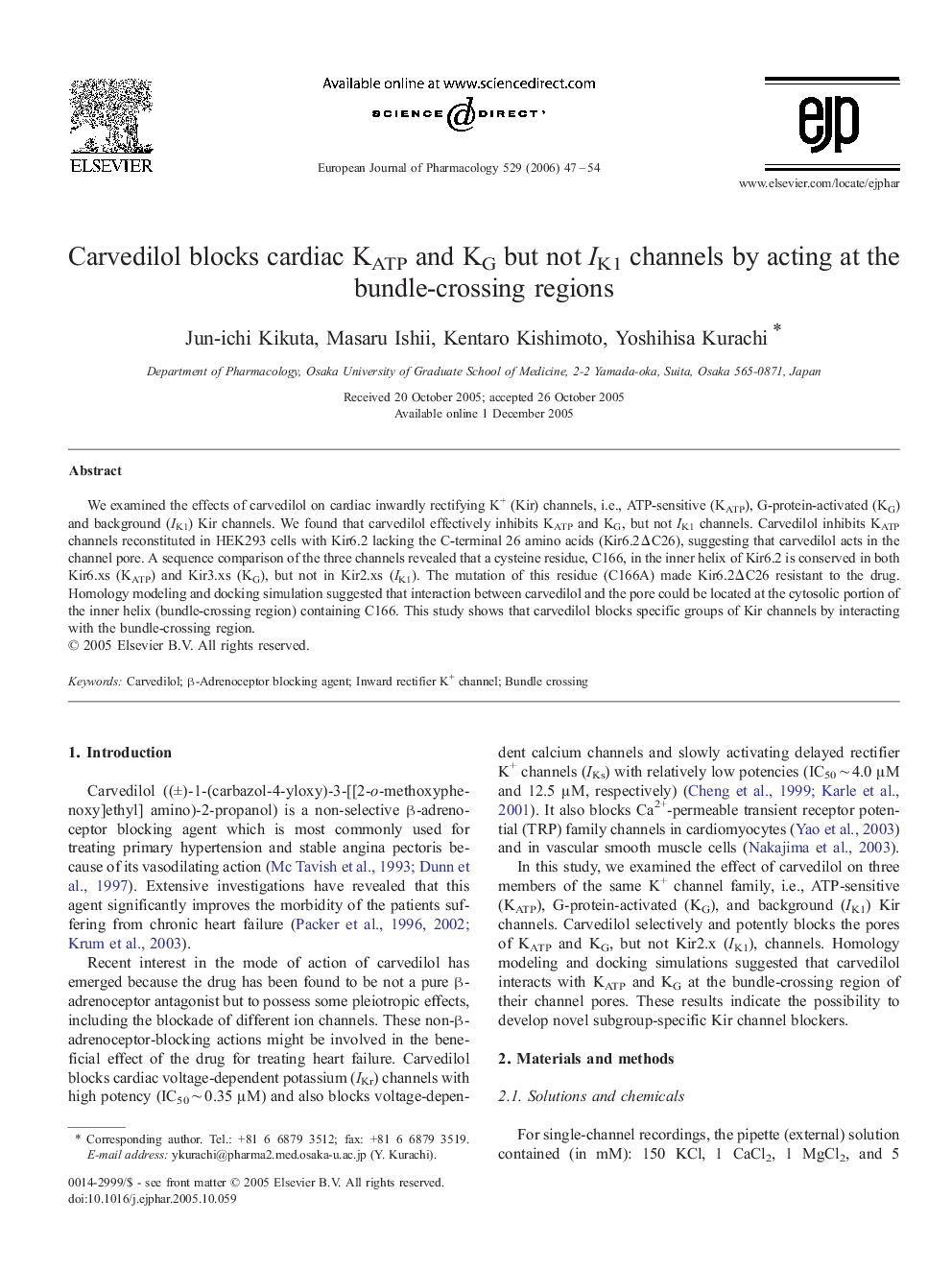| Article ID | Journal | Published Year | Pages | File Type |
|---|---|---|---|---|
| 2537582 | European Journal of Pharmacology | 2006 | 8 Pages |
We examined the effects of carvedilol on cardiac inwardly rectifying K+ (Kir) channels, i.e., ATP-sensitive (KATP), G-protein-activated (KG) and background (IK1) Kir channels. We found that carvedilol effectively inhibits KATP and KG, but not IK1 channels. Carvedilol inhibits KATP channels reconstituted in HEK293 cells with Kir6.2 lacking the C-terminal 26 amino acids (Kir6.2ΔC26), suggesting that carvedilol acts in the channel pore. A sequence comparison of the three channels revealed that a cysteine residue, C166, in the inner helix of Kir6.2 is conserved in both Kir6.xs (KATP) and Kir3.xs (KG), but not in Kir2.xs (IK1). The mutation of this residue (C166A) made Kir6.2ΔC26 resistant to the drug. Homology modeling and docking simulation suggested that interaction between carvedilol and the pore could be located at the cytosolic portion of the inner helix (bundle-crossing region) containing C166. This study shows that carvedilol blocks specific groups of Kir channels by interacting with the bundle-crossing region.
